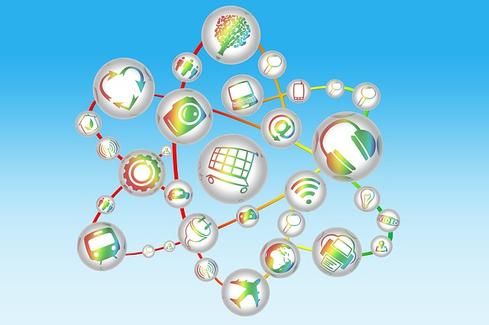Get Ready for IoT by Taking 3 Essential StepsGet Ready for IoT by Taking 3 Essential Steps
To prepare for IoT, companies need to take advantage of big data and advanced analytics, and adapt their culture, so they are ready for the transformation.

In the early 1990s, the general public made its earliest forays into using the Internet. At the time, no one could have imagined where the technology would lead. Social media, e-commerce, mobile apps, cloud computing, software as a service – the list is endless. Entire classes of applications – even industries – were not even a gleam in their creators’ eyes. Today these internet-based technologies have transformed the way we live and work.
Fast-forward more than 25 years. We are at a similar stage in the latest iteration of the internet – the Internet of Things (IoT). Pundits of all stripes predict that the IoT will change everything. Connected cars. Better patient monitoring devices. Industrial machines that track their own maintenance requirements. Intelligent street lights. Everything will be connected.
As with the original internet, we have no idea where the IoT will take us. And before we see the full impact of the predicted and unforeseen advances, we will need to remove significant technical obstacles, notably security and lack of standards.
Still, despite the roadblocks, companies that get ahead of the IoT curve will undoubtedly benefit from a lasting competitive advantage as they forge new markets. So what can your company do today to prepare for the future of IoT? The following are the top three best practices:
1. Build an analytics-centric, data-driven culture
If you work on IoT applications, be prepared for data – lots of data. The total volume of data generated by the IoT will reach 600 zettabytes (ZB) per year by 2020, according to Cisco estimates. This is 275 times higher than projected traffic going from data centers to end users/devices (2.2 ZB), and 39 times higher than total projected data center traffic (15.3 ZB).
You can only act on this data if you understand what it means. But with these vast quantities of data, understanding it all can be overwhelming. So your first step is to create an analytics-centric, data-driven culture. That is a cultural shift for many organizations.
For example, an international truck manufacturer created a new revenue stream by outfitting trucks with sensors for predictive maintenance. The system automatically schedules repairs when needed, and orders the required parts for the repair. More than 100,000 trucks have been outfitted with devices that transmit more than 10,000 data points for each truck.
But to gain insight like that, you need data to develop analytic models that enable the shift from scheduled maintenance to predictive maintenance – for early failure prediction and for prioritizing failures – and you need to manage the life cycle of these models. Just as it did for the truck manufacturer, analytic insight creates opportunities for greater productivity and efficiency, and helps you understand your business in a new way.
When you have an organization that is data-driven you follow the data. You are able to observe, model, predict and decide. You understand the need for exploration, visualization and predictive analytics. Sophisticated models, advanced analytics and machine learning are at the heart of it, therefore failures are typically rare. The Things in the Internet of Things operate within normal parameters most of the time.
2. Prepare for Automation
Considering the amount of data coming off IoT devices, as well as the myriad of applications and problems we want to solve, it seems unlikely that we can get on top of it by hand-crafting models and examining data with human eyes.
We need to get comfortable with automation of data management and analytics. Machine learning will play an important role. The first step is analytic automation through classical machine learning. These techniques use the data to train a known algorithm and to select the best analytic technique for the task. As more data becomes available, you can create a system that monitors and updates itself, built on machine learning techniques.
The second step is algorithmic automation, which uses deep learning techniques such as deep neural networks to write the analytic algorithm. In contrast to classical machine learning, these techniques acquire skills in the process of applying the data, for example the skill to distinguish a skin mole from malignant melanoma. Automation through deep learning introduces artificial intelligence (AI) into IoT applications, paving the way to evolve the Internet of Things into the Intelligence of Things.
3. Act on the data – at the right time and place
Wherever there is data, there needs to be analytics. Data without analytics is value not yet realized.
More and more data collected in IoT has an expiration date and latency requirements. When new, “zero-day” threats emerge, cybersecurity solutions need to detect them instantly to prevent them from breaching security and potentially stealing sensitive data. In this case, you need real-time analytics and decisioning. When you need to make sub-second decisions about stopping expensive equipment before it is damaged, the decisioning needs to be near or at the equipment.
We also cannot afford to send data from billions of devices to a data center or cloud and act on it there. Lack of memory and storage and network capacity are getting in the way. And much of the data collected on connected devices is redundant, since most devices operate normally most of the time.
The solution is to apply the right type of analytics at the right phase of the IoT data lifecycle.
Filtering, scoring, pattern matching and aggregating at the edge.
Aggregating and merging with regional information as data moves through the gateways.
Machine learning, modeling and managing the model lifecycle in an in-memory analytics platform in the data center or cloud.
Batch analysis of data after storage.
For each phase of the data, there is a matching phase and type of analytics.
Many analytics solutions available today are not built for speed or real-time analytics. A common model in IoT is to observe data in machines, devices, appliances and so on; transfer it to the cloud or the data center; and act on it there, often through batch processing. This might work for some applications. But the batch model will not meet the needs of most IoT applications in the future

Oliver Schabenberger, SAS
What’s next?
When it comes to advancing the Internet, we have taken huge strides over the last decades, and the journey has only just begun. Considering the potential of cognitive computing, machine learning and artificial intelligence, remarkable possibilities lie ahead for IoT.
The Internet of Things is part of the digital disruption and transformation of our world. A digital strategy requires a data strategy and an analytics strategy. To prepare for IoT, companies need to take advantage of big data and advanced analytics so they are ready for the transformation.
Related Posts:
Why the IoT Matters to Your Business
IoT and Privacy: Turning Pitfalls into Benefits
Oliver Schabenberger is Executive Vice President and Chief Technology Officer, SAS
About the Author
You May Also Like




